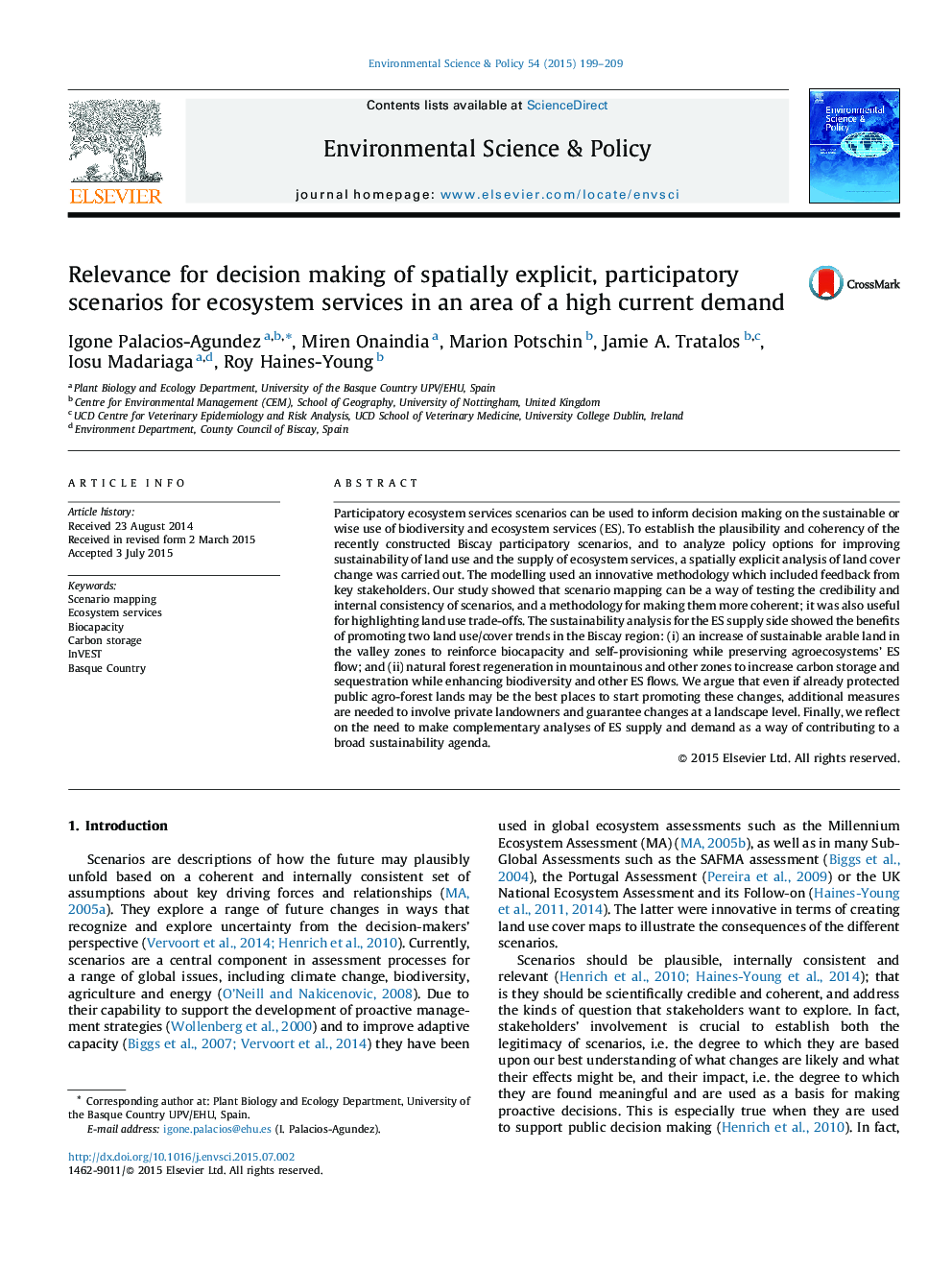| Article ID | Journal | Published Year | Pages | File Type |
|---|---|---|---|---|
| 7467257 | Environmental Science & Policy | 2015 | 11 Pages |
Abstract
Participatory ecosystem services scenarios can be used to inform decision making on the sustainable or wise use of biodiversity and ecosystem services (ES). To establish the plausibility and coherency of the recently constructed Biscay participatory scenarios, and to analyze policy options for improving sustainability of land use and the supply of ecosystem services, a spatially explicit analysis of land cover change was carried out. The modelling used an innovative methodology which included feedback from key stakeholders. Our study showed that scenario mapping can be a way of testing the credibility and internal consistency of scenarios, and a methodology for making them more coherent; it was also useful for highlighting land use trade-offs. The sustainability analysis for the ES supply side showed the benefits of promoting two land use/cover trends in the Biscay region: (i) an increase of sustainable arable land in the valley zones to reinforce biocapacity and self-provisioning while preserving agroecosystems' ES flow; and (ii) natural forest regeneration in mountainous and other zones to increase carbon storage and sequestration while enhancing biodiversity and other ES flows. We argue that even if already protected public agro-forest lands may be the best places to start promoting these changes, additional measures are needed to involve private landowners and guarantee changes at a landscape level. Finally, we reflect on the need to make complementary analyses of ES supply and demand as a way of contributing to a broad sustainability agenda.
Related Topics
Physical Sciences and Engineering
Energy
Renewable Energy, Sustainability and the Environment
Authors
Igone Palacios-Agundez, Miren Onaindia, Marion Potschin, Jamie A. Tratalos, Iosu Madariaga, Roy Haines-Young,
